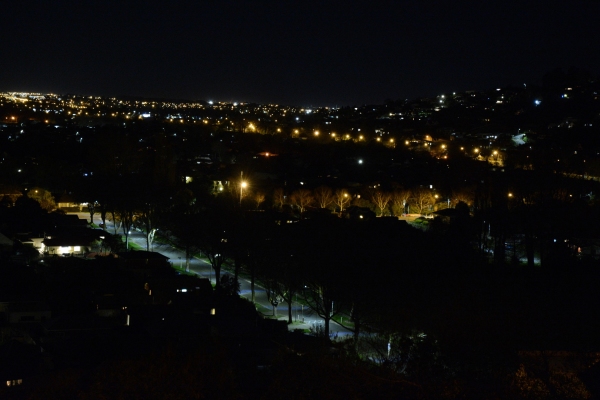New energy efficient streetlights are playing a major role in influencing insect behaviour, says NIWA.
The discovery comes from a four-year study investigating Ōtautahi - Christchurch city’s switch from older streetlights, such as yellow high-pressure sodium (HPS) lamps, to blue-white light-emitting diodes (LEDs).
This switch represents significant savings in operational costs and promises to reduce carbon emissions, but little is known about the ecological impacts on wildlife, particularly freshwater insects living near urban waterways.
Freshwater insects are an important corner stone of the ecosystem, providing food for animals such as fish and birds. Light pollution has contributed to insect numbers plummeting around the world’s urban areas, which has a knock-on effect for the whole food chain. In particular, blue light is known to impact the behaviour of many insects.
NIWA created a city-wide lightscape map to look at light and dark areas across Christchurch under different streetlighting scenarios. Scientists undertook a series of experiments using different types of operational-scale streetlights to understand which lights are most attractive to different flying insects
They found that the switch to 4000 K blue-white LEDs from HPS has seen a reduction in insect attraction in several locations, contrary to predictions because the LEDs emit more blue light than the HPS lamps.
NIWA freshwater ecologist Dr Michelle Greenwood led the MBIE-funded Smart Idea project. She says their findings may seem contradictory but it’s because light intensity was playing a bigger role.
“While many insects are generally more attracted to blue-light emitting LEDs, the switch from HPS to LEDs has actually seen a reduction in insect attraction across most of the sites we studied. This is because light intensity has a greater impact, and HPS lights often emit more light than the LEDs,” Dr Greenwood said.
Unsurprisingly, experiments also showed that many insects were more attracted to LEDs that emitted higher levels blue light compared to LEDs with less or no blue light.
“This means that using lights that emit less blue light is likely to benefit certain groups of insects, particularly moths, caddisflies and mayflies, with the magnitude of effect depending on the relative light intensity and colour spectrum of the lamps being replaced. Placing lights further from waterways or behind screens such as riparian plants, where possible, will also likely reduce the attraction of freshwater insect to streetlights,” said Dr Greenwood.
Around 370,000 streetlights across New Zealand have been replaced by energy efficient LEDs, mainly those that emit blue-white light. This study hopes to assist in the design of ecologically sensitive streetlighting plans and to help identify critical areas where alternative lighting solutions might be required.
More information: Investigating ecological impacts on freshwater insects from LED streetlight conversions.


